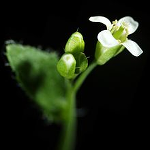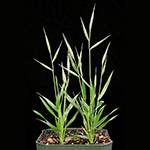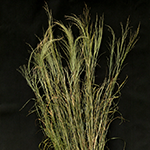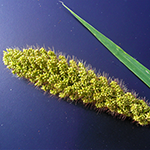Species
Error message
User warning: The following module is missing from the file system: announcements_feed. For information about how to fix this, see the documentation page. in _drupal_trigger_error_with_delayed_logging() (line 1181 of /opt/projects/grass-genome-hub.southgreen.fr/drupal-7.94/includes/bootstrap.inc).
Arabidopsis thaliana (Thale cress)
Arabidopsis (Arabidopsis thaliana) is a small flowering plant that is widely used as a model organism in plant biology. Arabidopsis is a member of the mustard (Brassicaceae) family, which... read more

Brachypodium distachyon (Purple false brome)
Brachypodium distachyon, commonly called purple false brome or stiff brome, is a grass species native to southern Europe, northern Africa and southwestern Asia east to India. It is... read more

Miscanthus sinensis (Chinese silvergrass)
Miscanthus sinensis is a species of flowering plant in the grass family Poaceae, native to eastern Asia throughout most of China, Japan, Taiwan and Korea. It is an herbaceous perennial... read more

Oryza sativa (Japonica Rice)
Japonica Rice (Oryza sativa Japonica) is the staple food for 2.5 billion people. It is the grain with the second highest worldwide production after Zea mays. In addition to its agronomic... read more

Panicum virgatum (Switchgrass)
Panicum virgatum, commonly known as switchgrass, is a perennial warm season bunchgrass native to North America, where it occurs naturally from 55°N latitude in Canada southwards into the... read more

Setaria italica (Foxtail millet)
Foxtail millet ( Setaria italica) is a diploid grass with a relatively small genome (~515 Mb). It is an important grain crop in temperate, subtropical, and tropical Asia and in parts of... read more

Sorghum bicolor (BTx623)
Sorghum bicolor, commonly called sorghum and also known as great millet, durra, jowari, or milo, is a grass species cultivated for its grain, which is used for food, both for animals and... read more

Sorghum bicolor (RTx430)
Sorghum bicolor RTx430 is a grain sorghum inbred commonly used as pollinator in hybrid production, whose genome is known to be rich in repeats.
Source :... read more

Sorghum bicolor (Rio)
orghum bicolor (L.) Moench subsp. bicolor, 'RIO' is an archetypal sweet sorghum line. In contrast to the current reference genome, the short-stature, early maturing inbred ‘BTx623' genotype that... read more

Zea mays (Maize)
Maize (Zea mays subsp. mays), also known as corn, is a cereal grain first domesticated by indigenous peoples in southern Mexico about 10,000 years ago. The leafy stalk of the plant... read more



